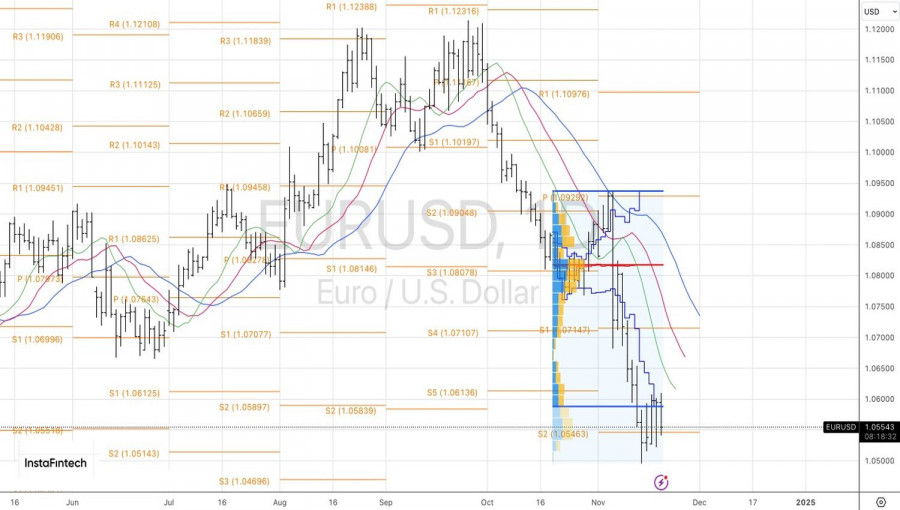Markets often "shoot first and ask questions later." Investors started buying the euro against the US dollar following the escalation of armed conflict in Eastern Europe. However, the consequences of this development are more detrimental to the Eurozone economy than to its American counterpart. The European Central Bank's biennial review highlights a slowdown in European GDP in the face of heightened geopolitical risks. And that's not even the most striking insight in the report.
This summer, the Federal Reserve shifted from high inflation to supporting the labor market and ensuring a "soft landing" for the US economy. This change in priorities from Jerome Powell and his colleagues weakened the US dollar. Now, as autumn wanes, the ECB appears to be following suit. It has been noted that the risks of an economic slowdown in the eurozone currently outweigh the risks of accelerating inflation.
Trade wars and geopolitical tensions could further stifle Eurozone GDP. The currency bloc exports more goods to the US than it imports, making it vulnerable to tariffs on imports imposed by Donald Trump. Moreover, Europe's reliance on exports means that disruptions to international trade and a slowing global economy would be a severe blow. Unsurprisingly, the euro was declining sharply before the Eastern European conflict escalated.
Eurozone Trade Balance Dynamics with the US

Geopolitical risks tend to have short-term effects, as evidenced by the oil market. Thus, the drop in US Treasury yields and the accompanying EUR/USD rally could be temporary. Buying in such a market is extremely risky.
Fundamentally, the case for selling the euro against the US dollar remains strong. Bank of Italy President Fabio Panetta states that demand in the Eurozone is stagnating, and inflation has reached its target. Keeping interest rates high in this scenario makes little sense. They should be moved to a neutral—or perhaps even accommodative—zone as soon as possible. If European business activity data shows further slowdown, the odds of a 50 basis point ECB deposit rate cut in December will rise, putting additional pressure on the euro.

Meanwhile, the market doubts that the Fed will ease monetary policy at the end of the year. The federal funds rate has been above 5% for most of the past two years. However, the US economy is strong, with unemployment at 4.1%—still modest by historical standards—and third-quarter GDP expanding by 2.8%. Inflation could resurface. Why take risks?
The battle for the key level of 1.0545 continues on the daily chart. The most the bulls managed was to push the pair toward 1.0600, where sellers took over. A drop in the euro below 1.0525 would heighten the risks of resuming the downward trend, providing a basis for adding to medium-term shorts with a target of 1.0350.
The material has been provided by InstaForex Company - www.instaforex.comfrom Forex analysis review https://ift.tt/wjTSXnC
via IFTTT
